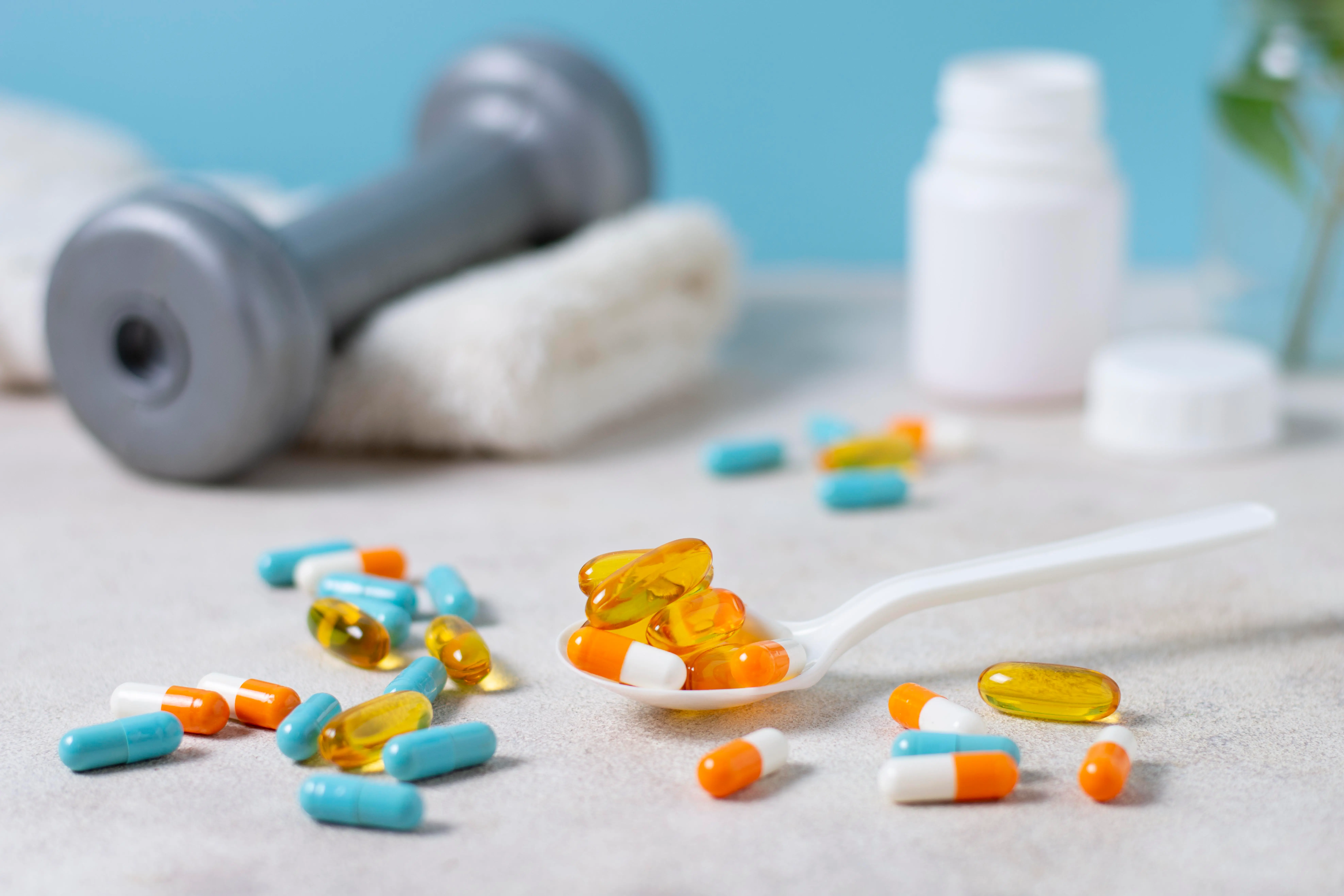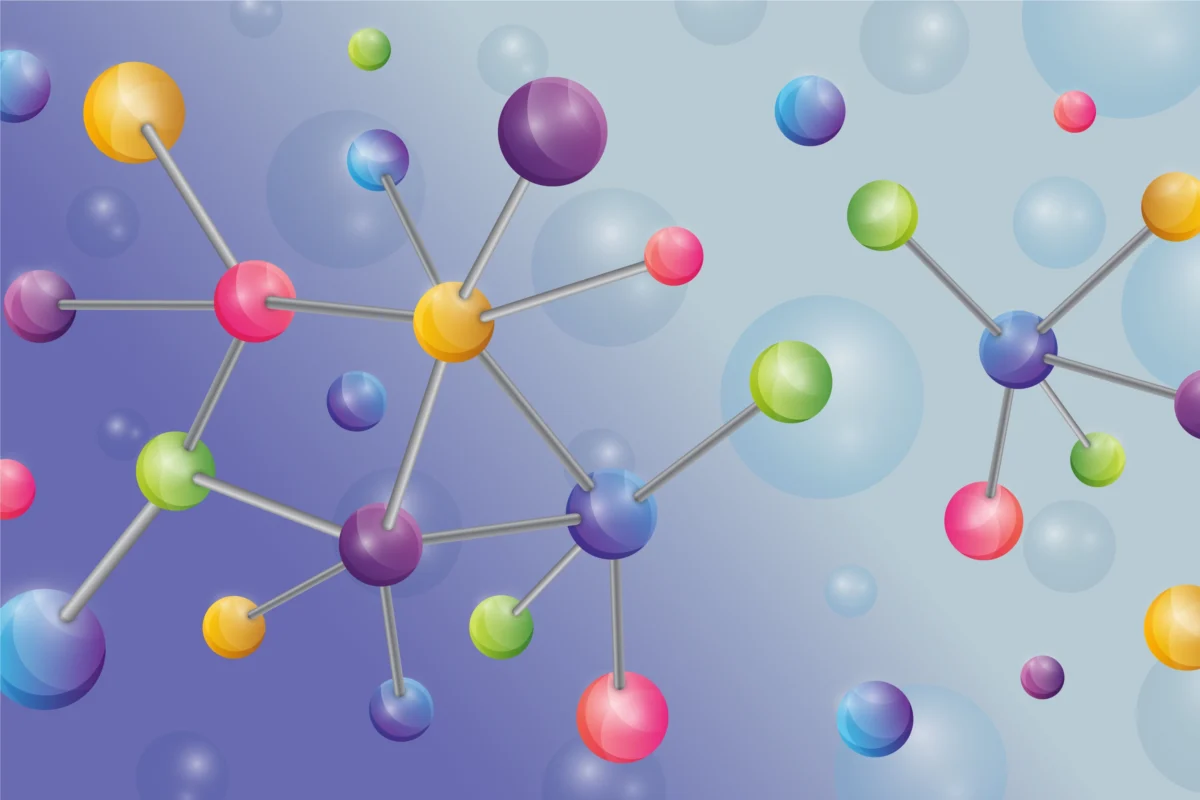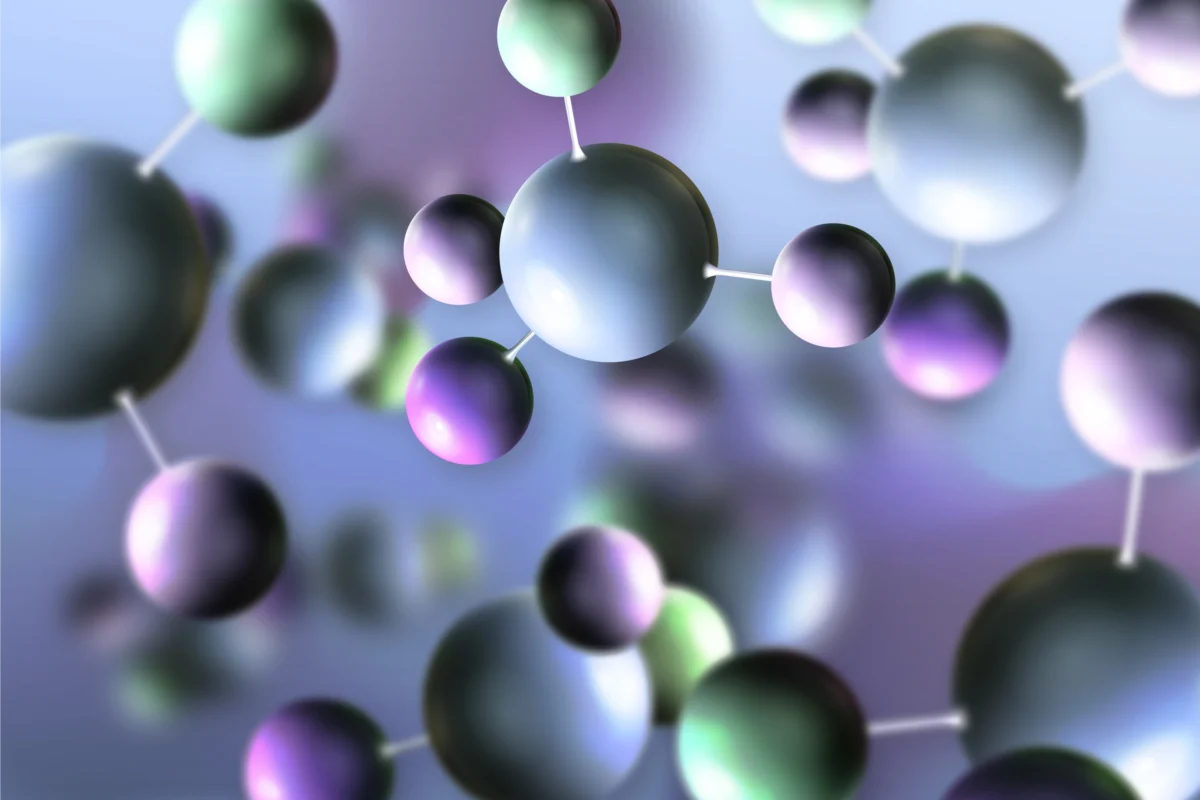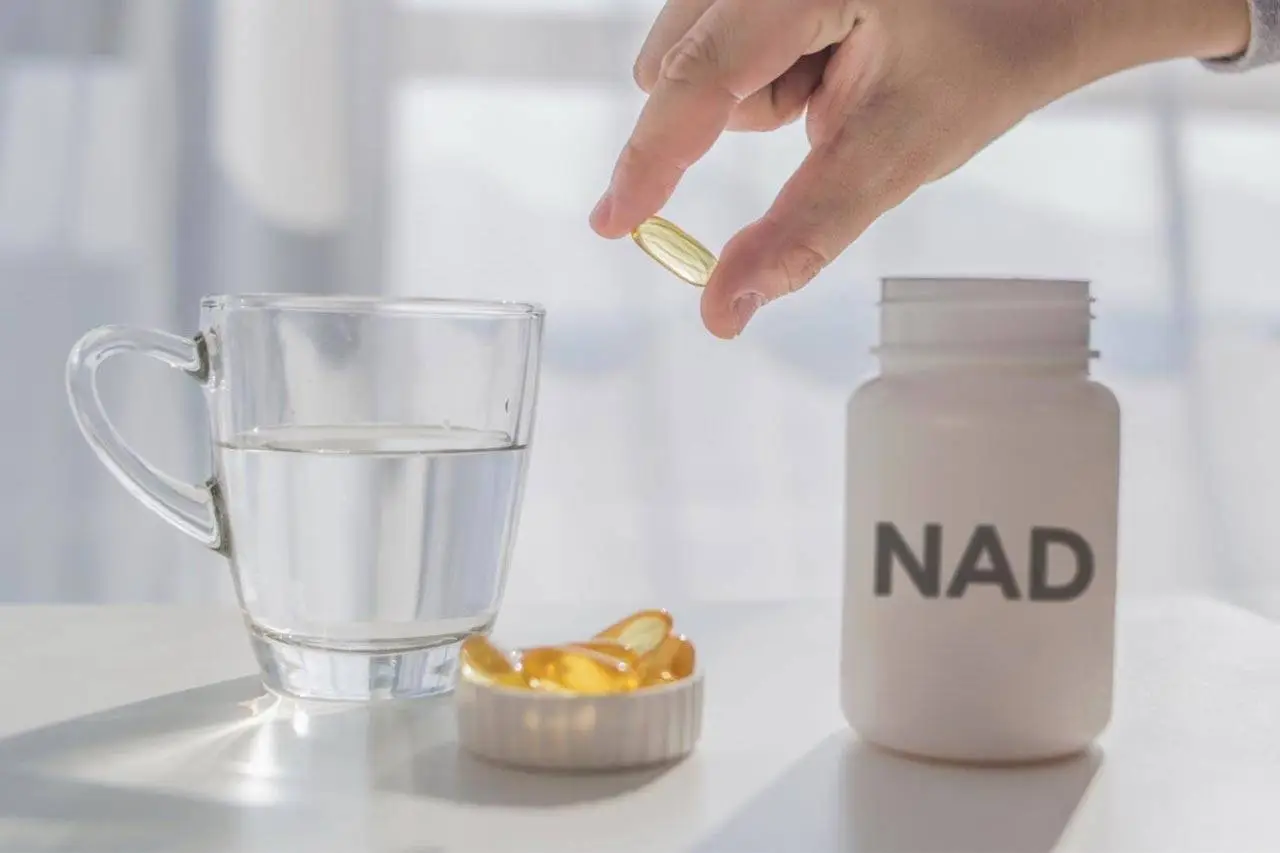Have you ever wondered how does NAD work? The answer lies in the intricate process of cellular respiration, where molecules are broken down, and energy is released. This process involves a series of chemical reactions that require the involvement of various molecules, including NAD (nicotinamide adenine dinucleotide).
Table of contents
Understanding NAD
NAD, short for nicotinamide adenine dinucleotide, is a coenzyme that plays a crucial role in cellular energy production. It is involved in various metabolic processes within our cells, acting as an essential electron carrier. Let’s delve deeper into the world of NAD and explore its functions and mechanisms in detail.
What is NAD?
NAD, with its full name nicotinamide adenine dinucleotide, is a coenzyme that is found in all living cells. It is derived from vitamin B3, also known as niacin or nicotinamide. NAD is an essential molecule involved in energy metabolism, acting as a key player in cellular respiration.
NAD+ and NADH: The Dual Nature
Nicotinamide Adenine Dinucleotide exists in two forms: NAD+ (oxidized) and NADH (reduced). These two forms represent the dual nature of NAD and its role in cellular energy production.
NAD+ as an Electron Carrier
NAD+ acts as an electron carrier during metabolic reactions. It receives high-energy electrons from molecules undergoing breakdown, such as glucose, fatty acids, and amino acids. This electron transfer is a crucial step in the production of ATP, the energy currency of our cells.
NADH: The Electron Storage
When NAD+ accepts electrons, it becomes reduced to NADH. NADH acts as a storage form of electrons, which can be later utilized in the electron transport chain to generate more ATP. The electrons carried by NADH are eventually passed along a series of protein complexes, releasing energy that is used to pump protons and create an electrochemical gradient, driving ATP synthesis.

How does nad work in Energy Production?
In the vast realm of cellular energy production, NAD plays a pivotal role as a coenzyme. It is an intricate molecule that orchestrates various metabolic processes, ensuring a steady supply of energy for our cells. Let’s dive deep into the world of how does NAD work and explore its significance in fueling our cellular machinery.
NAD in Glycolysis
The Breakdown of Glucose
One of the key processes in cellular energy production is glycolysis. It is an ancient metabolic pathway that occurs in the cytoplasm of our cells, involving the breakdown of glucose into pyruvate. NAD+ plays a fundamental role in this process by acting as an electron acceptor.
The Reduction of NAD+
During glycolysis, the cell splits each glucose molecule into two molecules of pyruvate. Along the way, NAD+ steps in and captures high-energy electrons from the intermediate molecules. The transfer of electrons in this process reduces NAD+ to NADH, creating a pool of stored electrons that can be utilized later in the energy production process.
NAD in the Citric Acid Cycle
A Gateway to Energy Generation
After glycolysis, the pyruvate molecules move into the mitochondria, where they undergo further breakdown in the citric acid cycle, also known as the Krebs cycle or the tricarboxylic acid cycle (TCA cycle). This cycle serves as a crucial bridge between the breakdown of glucose and the generation of ATP, the cellular energy currency.
NAD+ as an Electron Shuttle
The citric acid cycle is a complex series of reactions that generates high-energy electron carriers, including NADH. As each molecule of pyruvate enters the cycle, NAD+ eagerly accepts electrons from key reactions. This electron transfer leads to the reduction of NAD+ to NADH, storing the energy derived from the breakdown of glucose.

Maximizing Energy Yield
NADH passes along the electrons it carries to a series of electron transporters embedded in the inner mitochondrial membrane, ensuring they are not wasted. This flow of electrons results in the pumping of protons across the membrane, creating an electrochemical gradient. Ultimately, this gradient drives the synthesis of ATP through a process called oxidative phosphorylation.
NAD+: Its Role in the Citric Acid Cycle
In the vast realm of cellular energy production, NAD+ plays a pivotal role as a coenzyme. It is an intricate molecule that orchestrates various metabolic processes, ensuring a steady supply of energy for our cells. Let’s delve into the inner workings of how does NAD work in the citric acid cycle, also known as the Krebs cycle, and understand how it contributes to ATP synthesis.
The Citric Acid Cycle: A Dance of Energy Conversion
The citric acid cycle is a fundamental pathway within our cells that converts the carbon atoms derived from glucose into carbon dioxide, generating ATP and electron carriers in the process. NAD+ emerges as a key player, facilitating the transfer of high-energy electrons and participating in the overall energy production.
NAD+ in Electron Transfer Reactions
The citric acid cycle consists of a series of chemical reactions that occur in the mitochondria. As the cycle progresses, NAD+ acts as an electron acceptor, capturing electrons from various intermediate molecules. This electron transfer leads to the reduction of NAD+ to NADH, allowing it to carry the stored energy derived from glucose breakdown.
NADH and ATP Generation
One of the primary goals of the citric acid cycle is to generate ATP, the energy currency of the cell. NADH, the reduced form of NAD+, plays a crucial role in this process. It functions as a carrier of high-energy electrons, shuttling them to the electron transport chain for further ATP synthesis.
NAD+ and Oxidative Phosphorylation: A Symbiotic Relationship
Oxidative phosphorylation is a complex process that occurs in the inner mitochondrial membrane, where ATP synthesis takes place. NADH, derived from the citric acid cycle, serves as a key component in this energy-generating pathway.
Donating Electrons to the Electron Transport Chain
Within the electron transport chain, NADH donates its high-energy electrons to the first complex, known as NADH dehydrogenase. This complex catalyzes the transfer of electrons to subsequent protein complexes in the chain, creating a flow of electrons across the inner mitochondrial membrane.
ATP Synthesis: Harnessing the Power of Proton Gradient
The protein complexes of the electron transport chain facilitate the flow of electrons, pumping protons across the inner mitochondrial membrane and establishing an electrochemical gradient. This gradient serves as the driving force for ATP synthesis by the ATP synthase enzyme, which utilizes the energy from the proton flow to produce ATP molecules.
Replenishing NAD+: Completing the Cycle
As the electron transport chain receives electrons from NADH, it converts them back into NAD+. This regeneration of NAD+ is essential for the continuity of the citric acid cycle and the subsequent production of NADH. The cycle perpetuates as NAD+ accepts new electrons from intermediate molecules, ensuring a constant flow of energy production.

NAD+ Regeneration and Cellular Repair: Sustaining the Powerhouse
In the intricate dance of cellular metabolism, the continuous regeneration of NAD+ is vital for maintaining optimal cellular function. The limited availability of NAD+ and its crucial role in various metabolic processes necessitate efficient recycling mechanisms. Let’s explore the importance of NAD+ regeneration and delve into the fascinating world of NAD+ precursors and supplements.
The Importance of NAD+ Regeneration: A Precious Resource
The critically important coenzyme NAD+ actively participates in numerous cellular processes, including DNA repair, energy production, and gene expression. Therefore, the continuous recycling of NAD+ is crucial for sustaining cellular vitality.
The Role of NAD+ Synthase: Generating NAD+ from Precursors
NAD+ synthase is a key enzyme responsible for the regeneration of NAD+ from its precursors. This enzyme catalyzes the conversion of nicotinamide adenine dinucleotide phosphate (NADP+) into NAD+. By utilizing the precursors available in the cell, NAD+ synthase ensures a steady supply of NAD+ for cellular processes.
NAD+ Kinase: A Gatekeeper of NAD+ Homeostasis
Another essential enzyme involved in the recycling of NAD+ is NAD+ kinase. This enzyme phosphorylates NAD+ to form NADP+, which serves as a precursor for NAD+ synthesis. By maintaining a delicate balance between NAD+ and NADP+, NAD+ kinase ensures the proper functioning of cellular processes that require NAD+.
NAD+ Precursors and Supplements: Fueling the Regeneration
In the quest to support NAD+ regeneration, scientists have explored the concept of NAD+ precursors and supplements. These compounds have shown promise in enhancing the NAD+ pool and potentially improving cellular function.
Unlocking NAD+ Precursors: Nicotinamide Riboside (NR) and Nicotinamide Mononucleotide (NMN)
NAD+ precursors, such as nicotinamide riboside (NR) and nicotinamide mononucleotide (NMN), have gained attention for their ability to increase NAD+ levels in cells. Specific enzymatic reactions convert these into NAD+. That provides an alternative route for NAD+ regeneration.
The Potential Benefits of NAD+ Supplementation
NAD+ supplementation has emerged as a potential strategy to replenish NAD+ levels and support cellular function. By directly providing NAD+ to the cells, supplementation aims to address the limitations of NAD+ availability and promote optimal cellular metabolism.
The Limitations of NAD+ Supplementation: Overcoming Bioavailability Challenges
While NAD+ supplementation shows promise, it also faces challenges related to bioavailability. NAD+ is a large molecule that is difficult to transport across cell membranes. Overcoming this hurdle is crucial to ensure effective delivery of NAD+ to the cells and maximize its potential benefits.
Conclusion
How does nad work? NAD+ plays a crucial role in cellular metabolism and repair processes. Its continuous regeneration is essential for maintaining optimal cellular function and vitality. Enzymes like NAD+ synthase and NAD+ kinase, along with NAD+ precursors and supplements, contribute to the replenishment of NAD+ levels. By understanding the mechanisms behind NAD+ regeneration, we gain insights into the intricate workings of cellular repair and pave the way for potential advancements in promoting overall cellular health.
Frequently Asked Questions
NAD+ supplementation has shown potential in replenishing NAD+ levels and supporting cellular function.
Consuming NAD+ precursors like nicotinamide riboside (NR) and nicotinamide mononucleotide (NMN) is generally considered safe.
NAD+ regeneration is believed to play a role in combating the effects of aging by supporting cellular repair and energy production.

I am John, a dedicated Content Writer with a passion for enhancing brands, particularly in the Supplement industry. Currently, I’m part of the dynamic team at Plantanium. My mission is to connect People with the exceptional Supplement Products provided by Plantanium, ensuring that individuals achieve their best health.


